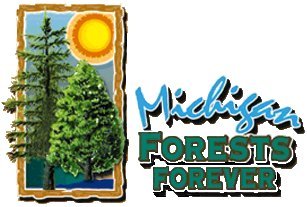

Home Page |
MICHIGAN FORESTS FOREVER TEACHERS GUIDE
 |
Wood as Energy |
|
Wood Energy Curriculum for High School Classrooms
This wood energy curriculum module is divided into five sections. Each section has a set of exploration topics to help guide students through an aspect of energy, energy use, and the role of woody biomass. Some materials are provided but, more important, resources are included for development of additional materials.
1 - Big Energy
2 - Wood Energy
3 - Environmental Aspects
4 - Socio-Economic Aspects
5 - Bringing It All Home
Michigan Wood Energy website
Wood As Energy
Wood has been used as an energy source for thousands of years. Diminishing sources of wood have contributed to the decline of many civilizations. Fortunately, the United States could be self-sufficient in wood, although we have become a net wood importer. The United States conversion to coal lagged behind that of Europe by decades, due to the large volumes of inexpensive wood.
This section explores the wood resource and how wood might be used for energy. The energy stored in the molecules of wood can be converted to heat, electricity, and/or transportation fuel. As alternatives of fossil fuels become increasingly important, wood fuel will occupy a significant share of that picture.
Wood offers some particularly advantageous benefits for communities that have access to wood supplies. Using wood employs local loggers, truckers, support businesses, and other people. Dollars remain in the community to work in the community. Local economies grow and become more stable. There is less dependency on fossil fuels. New markets can provide better opportunities for forest management and maintaining healthy forests. Wood is available year-round and can be stored "on the stump" for a fairly long amount of time. Wood grows back, with time, and younger forests sequester atmospheric carbon at higher rates than old growth forests. Forests provide a wide range of essential benefits beyond wood and energy products. Even wood energy plantations offer more habitat elements and diversity opportunities than annual crops or retired farmland. All of these kind of issues need to be compared and contrasted with both fossil fuels and other renewable energy sources.
Michigan has growing wood inventories, yet we are a net wood importer (the same is true for the USA). Many households in rural Michigan use wood as an important source of heat. Much of rural Michigan has an abundant forest resource. Statewide, and in most regional analyses, annual growth exceeds annual harvest.
Wood’s greatest potential for short-term use would be for heating, particularly for district energy systems. A district energy (DE) system includes a boiler and underground hot water pipe network. DE can feed a large building, groups of buildings, or entire communities at costs below conventional systems and with equal reliability. Using wood keeps energy dollars in the local economy and provides local jobs.
Larger energy demands allow electricity generation to be added to a DE system. This is called a “combined heat & power” (CHP) plant. Sometimes these facilities are called “co-gen” plants. Modern technologies have been well-developed in northern Europe and have been increasingly used since the oil shortages of the 1970s. Michigan could quickly adopt these technologies and, in fact, already has examples.
Most DE and CHP systems are smaller and more dispersed across the landscape, although some can be quite large under the right circumstances. This is the opposite pattern of large modern coal-fired utilities, which need large capacities to attain profitable economies of scale. The cost of electricity to the grid is usually more expensive from wood-fired systems, versus large coal-fire systems.
Lastly, wood can be converted to transportation fuels, such as ethanol. Worldwide, there is a race to build the first commercial-sized cellulosic ethanol plant. One of the facilities in contention is the Frontier Renewable Resources project at Kinross (in the eastern U.P.).
This section explores answers to 10 questions. These ten questions will likely generate other questions, which would be good to explore.
1. What are some examples of where wood energy is used?
2. How much money might your school save by using wood energy?
3. What are some of the closest wood energy
facilities near your school?
4. How would you define woody biomass?
6. How much wood grows in Michigan each year? How much is already used?
7. How much more might new wood energy consumers use?
9. What is combined heat & power or co-generation?
10. How can wood be converted to ethanol?
1. What are some examples of where wood energy is used?
Michigan is a nationally significant wood energy user, with about 125 locations (not including all the home heating furnaces). Most of the facilities use wood to produce heat only, including 7 schools (all in the U.P.). There are 7-8 wood-using facilities in Michigan that produce electricity. The number of facilities is gradually increasing.
13 pellet plants
2 planned ethanol plants
8 electricity generation plants (including 2 pulp mills) (more under consideration)
6 DE systems (more under consideration)
4 CHP systems (more under consideration)
28 forest product companies (including pulp mills)
28 secondary forest product companies
56 other wood-fired boiler systems
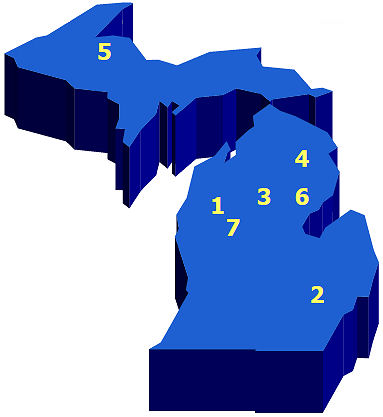 |
Utilities that use wood
1. Cadillac Renewable Energy Utilities in Escanaba, White Pine, Sawyer, and Northern Michigan University are considering biomass-based power. |
Some sites are nationally well-known DE users. The Lied Center, owned by the National Arbor Day Foundation both heats and cools its large conference center with wood. Downtown St. Paul (Minnesota) uses CHP technology based on municipal solid waste. The Empire State Building has a DE system (not wood fueled). There are many others. The International District Energy Association has much more information about DE and CHP, although not all the systems are fueled with wood.
References
Southeast Michigan Resource Conservation & Development. 2007. Exploring Woody Biomass Retrofit Opportunities in Michigan Boiler Operations.
Michigan DNR Wood Products Directory
2. How much money might your school save by using wood energy?
U.P. schools that heat with district energy systems are Whitefish Township, Mid-Peninsula, North Dickinson, Wakefield-Marenisco (currently idle), Calumet High School, North Central, and Wilson Junior Academy. Additionally, Pinecrest Medical Care in Powers has a district energy system, along with a bunch of schools in northwestern Wisconsin. [cite 1] These users have saved hundreds of thousands of dollars over the years. Schools in Republic-Michigamme and De Tour are planning on conversions in 2012 or 2013.
How much money does it cost to heat and cool your school for a year?
Six school buildings in the Upper Peninsula had feasibility studies done for wood chip heat systems in 2009. Schools with old fossil fuel boiler systems are the best fit, as they must soon replace their systems anyway. Depending upon the kind of current system, converting to a wood chip heat system may have higher capital costs, up to 15-20% more than fossil fuel systems. However, the fuel and operating costs for wood are much lower. The following table shows how many years would be needed to payback the entire system cost through savings by using wood rather than natural gas.
|
|
Capital Cost |
Annual Savings |
Payback (years) |
|
School 1 School 2 School 3 School 4 School 5 School 6 |
430,000 428,000 246,000 322,000 580,000 475,000 |
56,904 30,432 26,337 19,123 77,371 37,359 |
7.6 14.0 11.0 25.8 7.9 12.7 |
|
Source: BURN-UP Engineering Studies, 2008 |
|||
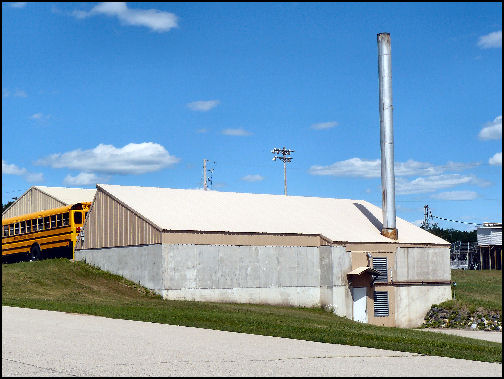 |
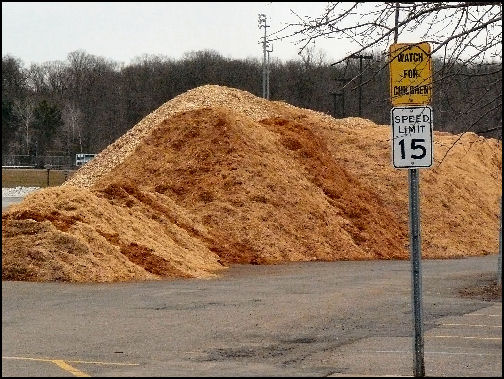 |
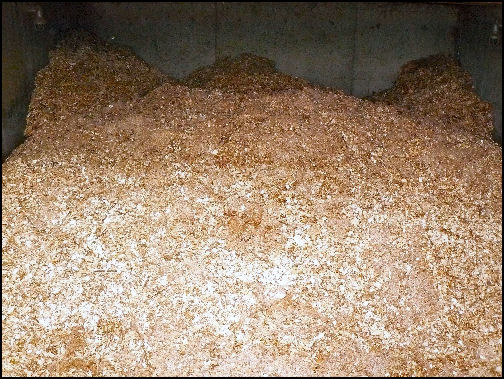 |
| Heating Plant and Chip Storage Building | Wood Chip Pile Next to School | Wood Chips in Storage Bin |
References
3. What are some of the closest wood energy facilities near your school?
Wood is used in many ways to supply energy. The following maps show the 2010 locations of various wood energy use facilities.
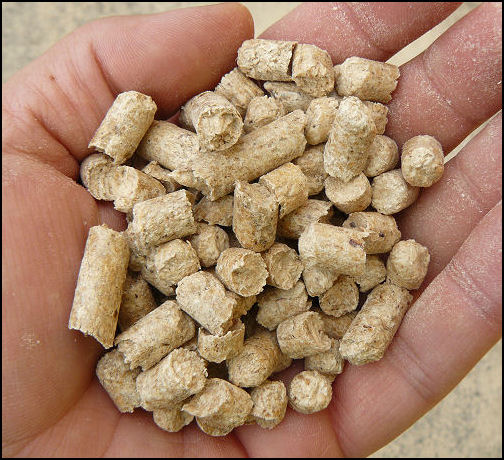 |
Pellet Manufacturers:
Pellets are more expensive than chips but have more energy per weight and
can fuel highly efficient stoves. Most pellet use is for residential use,
especially those houses that are more remote. Most pellets are the size
that look a bit like pet food. However, a few manufacturers make larger
size pellets for industrial size boilers (e.g. renewaFUEL) or for specialty
use (e.g. EnviroIndustries). |
|
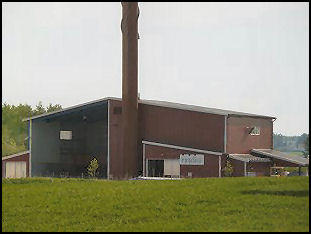 |
District Energy and
Combined Heat & Power: Most of the DE locations are schools and heat a
single building. However, there are some notable multiple building systems
(e.g. downtown St. Paul, which burns municipal solid waste, most of which
is paper and wood). The Laurentian Energy Project converted two closed
coal utilities and heat area cities with wood from the forest. The forest
industry is stressed in Northeast Minnesota and this project helped keep
logging contractors in business. |
|
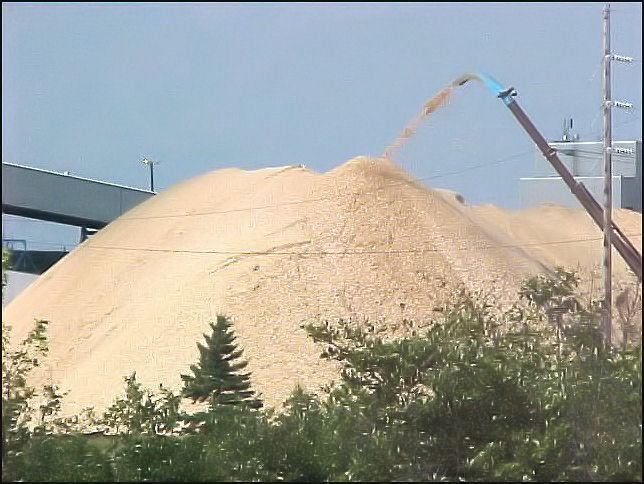 |
Big Users: Pulp
& paper mills, electricity utilities, and (proposed) cellulosic ethanol
refineries consume large quantities of wood for heat and/or electricity.
The majority of renewable energy in the Lake States is generated by the pulp
& paper industry, and has been for decades. Wisconsin has the largest
number of these facilities. Michigan now has only two pulp mills, both in
the Upper Peninsula. The wood used for energy is different than that used
for pulp, although much of the ‘waste’ generated in the process is diverted
to the energy boilers. |
|
|
|
Wood-fired Boilers: Many forest industries and non-forest industries use wood to heat their buildings and/or provide heat for manufacturing processes. Most of these are regulated by state agencies because of their larger size. The backyard wood furnaces are not included in this category. Because they are not regulated, there is no public record of their location, size, or condition. |
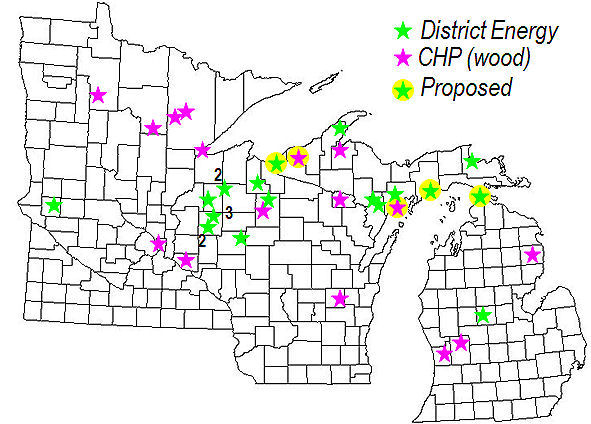
DE and CHP
in the Lake States (~2010). The numbers show locations with more than one
DE site. |
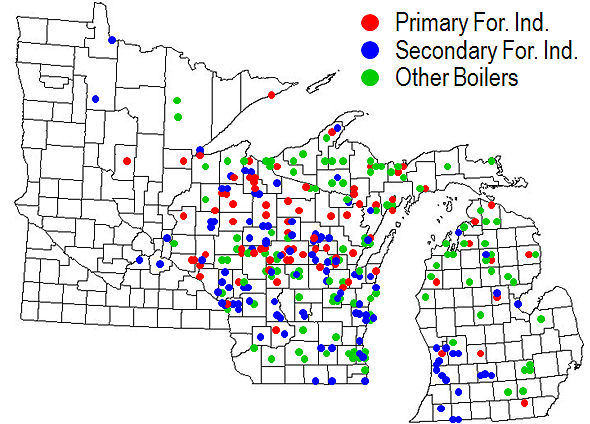
Wood Boilers
are fairly common across the Lake States. Information for Minnesota was
unavailable, but there are certainly more locations there. (Click
for larger image) |
|
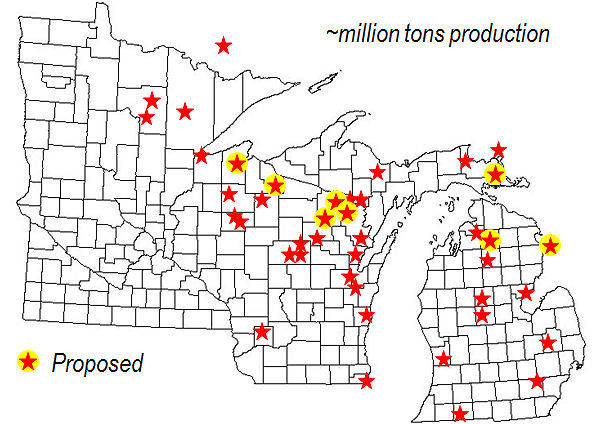 Pellet manufacturers in the Lake States (~2010). Combined, these plants produce about a million dry tons of pellets each year. (Click for larger image) |
 Big Energy Producers are largely pulp & paper mills. Most of the regional renewable energy is produced by these manufacturers. (Click for larger image) |
The above maps will change annually as new facilities come on line and others
may go out of business.
4. How would you define woody biomass?
Essentially, woody biomass is anything composed of wood or comes from trees. There are many forms such as green wood, logging slash (stuff left on-site after a harvest), residues from wood manufacturing companies (e.g. sawmills, pulp mills, etc.), and demolition wood. Paper, cardboard, and other wood-based products can be separated from a municipal solid waste stream.
The word ‘biomass’ can mean several things. So, it’s important to know what is meant when someone says the word. For farmers, biomass is often considered to be leftover plant material. Corn stover is the stocks and leaves left after the ears are removed. Bagasse is the part of sugar cane not used for sugar. Most of the current biomass-based ethanol is made from corn, but cellulosic (wood-derived) ethanol is on the horizon.
Forest inventories can express the volume of entire trees as biomass, including roots, leaves, twigs, and branches. Sometimes, forest inventories only include the tree stems of commercial species and express volumes useful to those who produce traditional forest products (e.g. cords, board feet, cubic feet).
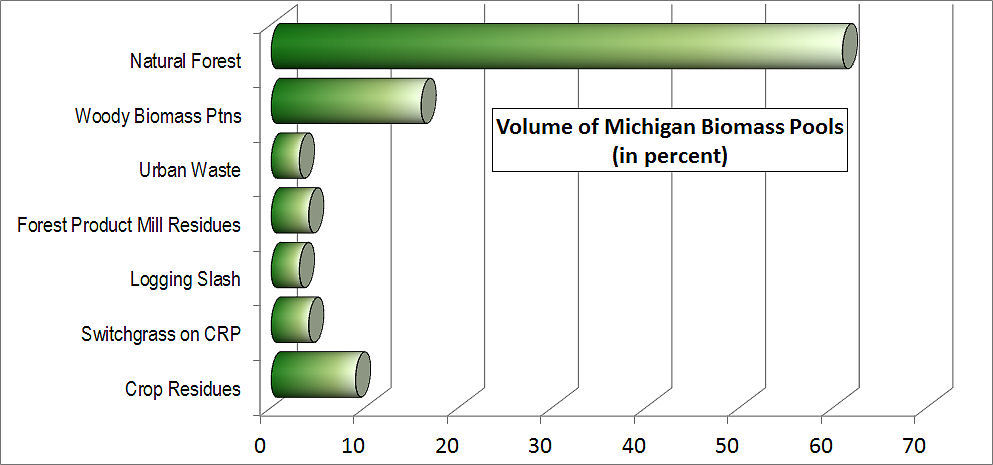
Source: Ray Miller, MSU Forest Biomass Innovation Center, unpublished data.
CRP = Conservation Reserve Program
Ptns = Plantations
5. Is all biomass the same?
Certainly not. Wood is just one kind of biomass. Energy feedstocks can be produced from grasses (e.g. Miscanthus, switchgrass, others), agricultural residues (e.g. corn stover, sugar cane bagasse, rapeseed, others), algae, animal wastes, and other sources. Michigan agriculture is a huge industry, second largest in the state (auto industry is #1 and forest industry is #3). Many renewable energy technologies exist, and are being developed, for agricultural operations and from agricultural by-products.
Different feedstocks can be best used in different applications and energy conversion processes. Different kinds of wood also can be variously applied to different kinds of processes.
The sizes of chips and ground-up wood can make an important difference in the manufacturing of wood pellets or cellulosic ethanol. Species differences become important. Wood can also come with a lot of leaves and twigs, which is OK in some cases and unacceptable in others. Then, there are many kinds of mill residues, such as bark, sawdust, shavings, chunks, and other materials.
Premium grade pellets need tree species with fibers of an appropriate mix of lengths. The pellets must remain intact, without glues, after the wood is treated with heat and pressure. Any old mix of wood simply won’t do.
The proposed cellulosic ethanol plant at Kinross (in the eastern UP) will require high quality, very clean, hardwood chips of a certain size. Their particular bio-chemical process needs a specific size of chip and will begin with a preference for maple.
Even wood that is simply burned in a boiler has to be pre-processed to reduce the number of pieces that might get jammed in conveyor lines and other equipment. Moisture content is important. To optimize the combustion physics of boilers, just the right kind of feedstock must be used.
How does the State of Michigan define biomass? U.S. government agencies such as the Department of Agriculture, Department of Energy, or the Environmental Protection Agency? Can wood from the forest be used to meet renewable energy targets?
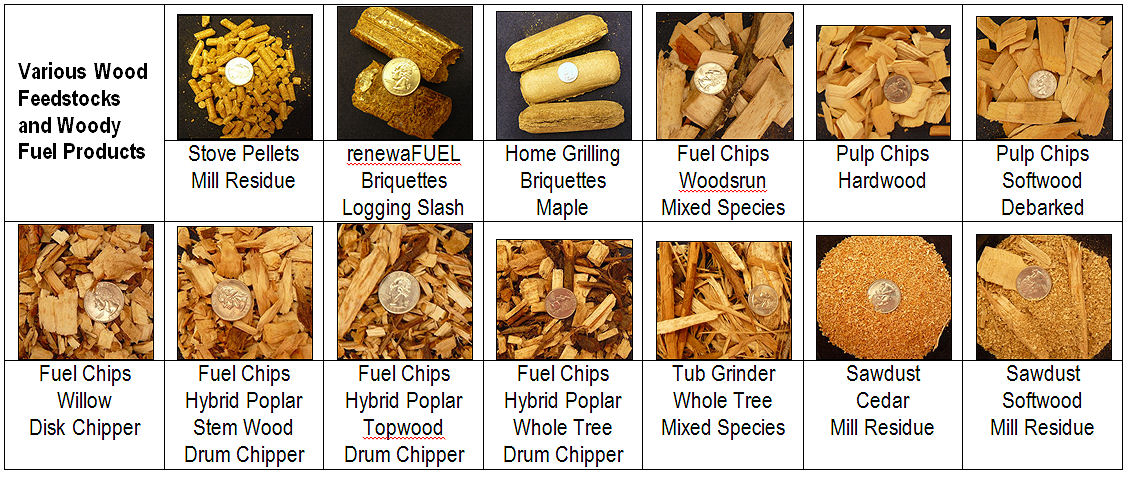
6. How much wood grows in Michigan each year? How much is already used?
About 695,150,000 cubic feet grows in Michigan each year, and about 319,802,000 cubic feet are harvested, and about 272,277,000 cubic feet die from natural causes. OK, what does that mean?
There are many ways to slice and dice forest inventory data. Some make more or less sense than others, but it’s helpful to know how a particular figure is derived. Michigan’s forest inventory is maintained by the USDA Forest Service, with assistance from the Michigan DNR. Each state has a similar inventory. If you’re curious about the Forest Inventory & Analysis data, visit the website [http://www.fia.fs.fed.us/tools-data]. However, the definitions of terms in this tool can be challenging.
A good summary document about Michigan’s forest inventory can be found at [http://www.nrs.fs.fed.us/pubs/37793]. It’s a summary of 2010 data. Each year, updated summaries are prepared based on new data. A larger report was published in April 2012 that describes Michigan's seventh forest inventory, completed as of 2009.
 So,
what does 695,150,000
cubic feet look like? It’s about 8.7 million cords. A cord is a stack of
8-foot long pulpsticks, four feet high and four feet wide. If 8.7 million cords
were laid end-to-end, the pile would run over 13,000 miles, which is almost the
circumference of the Earth at the equator. It’s a lot of wood. And it’s just
the amount that grows each year in Michigan . . . not the volume of standing
wood.
So,
what does 695,150,000
cubic feet look like? It’s about 8.7 million cords. A cord is a stack of
8-foot long pulpsticks, four feet high and four feet wide. If 8.7 million cords
were laid end-to-end, the pile would run over 13,000 miles, which is almost the
circumference of the Earth at the equator. It’s a lot of wood. And it’s just
the amount that grows each year in Michigan . . . not the volume of standing
wood.
What can you do with a million cords of wood? That’s about the quantity of wood used each year by NewPage or Verso Papers. Or two Grayling Weyerhaeuser mills. Or 1.25 Frontier cellulosic ethanol plants. Or, four 36 megawatt electric plants. What should Michigan try to do with all the wood we grow each year? The topic is very controversial.
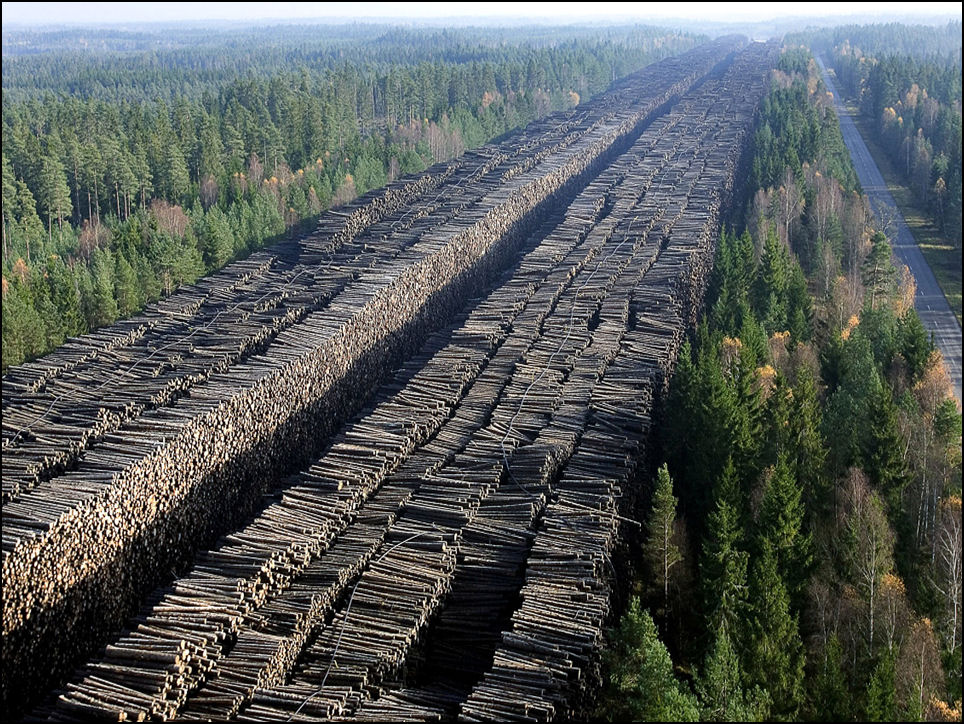 About half-million cords of wood. Michigan grows about 25 times this amount each year. |

Michigan's forest volume inventory has been growing for
nearly 100 years. More wood could be sustainably harvested. |
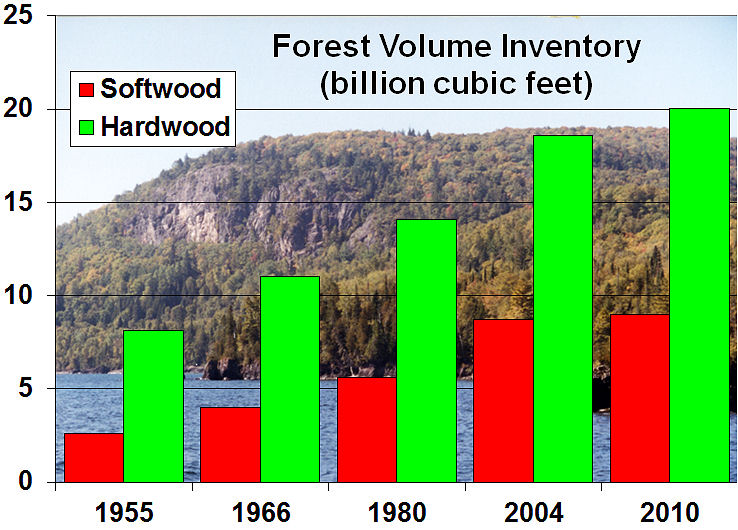
Growth in Michigan's standing forest volume. |
References
7. How much more might new wood energy consumers use?
 Forest ownership in Michigan. (Click for larger image) |
Forest inventories demonstrate that a lot more wood grows in Michigan than what is currently harvested. So, could all of that ‘extra’ growth be converted to energy? Theoretically, yes. Practically, no. Aside from environmental and economic issues, forest owners may choose not to sell their wood. Social acceptability is an important factor. In fact, most Michigan forest owners place revenue generation fairly low on their priority list.
Figuring out how much wood might actually be placed on the market is a difficult exercise. There are about 440,000 forest owners in Michigan that control nearly half the forest resource. The other half is owned by governments and large corporate owners.
Michigan is building a statewide biomass inventory that should be able to better respond to some of the supply quantity questions that planners (and others) need answered. It’s a large project. The agricultural portion was completed in 2010. The forest portion is now on-line and will continue to be modified.
The proposed cellulosic ethanol plant near Kinross will be a major wood consumer, on par with Michigan's pulp mills. Fiber for this plant will come from the eastern U.P. and the northern L.P., as well as adjacent Ontario. A large wood supply chain research program was conducted in 2010 and 2011 to help address some of the wood supply issue. In the 2000s, several large wood consumers closed their doors. As a result, about two million cords of wood no longer had a market. |
References
Forest-based Woody Biomass Assessment for Michigan's Upper Peninsula. 2010. Tessa Systems. 114 pp.
8. What is district energy?
District Energy (DE) distributes heat via an underground hot water (not steam) piping grid. The water is heated at a centralized heating plant. Wood is a particularly good boiler feedstock in rural areas where forests are present and appropriate harvesting systems are available (logging contractors with a chipping machine). These systems tend to be small, in the single digit megawatt range (or 20-50 million BTUs). DE systems can be expanded by adding pipeline and, when necessary, an additional boiler.
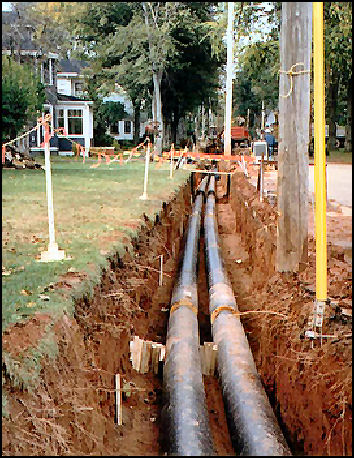 DE
systems can also cool a building by distributing cold water through the same
pipe grid, using wood energy to run a cooling unit. A good example of this
heating/cooling DE concept is installed at the Lied Lodge & Conference Center in
Omaha, owned by the National Arbor Day Foundation [http://www.liedlodge.com/about/green.cfm].
http://www.liedlodge.com/about/green.cfm
DE
systems can also cool a building by distributing cold water through the same
pipe grid, using wood energy to run a cooling unit. A good example of this
heating/cooling DE concept is installed at the Lied Lodge & Conference Center in
Omaha, owned by the National Arbor Day Foundation [http://www.liedlodge.com/about/green.cfm].
http://www.liedlodge.com/about/green.cfm
Several wood chip heating systems can be found in the Upper Peninsula. Most of them are schools. They use the DE idea but typically heat only one building . . . the school. These schools include Mid-Pen, North Central, Whitefish Township, and Calumet-Laurium-Keweenaw. In Powers, the Pinecrest Medical Care Facility is heated and cooled with DE system.
In several northern European countries, DE heat has supplied residences, and most commercial and industrial buildings for decades. When the energy demand grows to a certain point, electricity production becomes possible and utilities are modified accordingly. Some of the woody biomass supplied utilities are quite large (400-500 megawatts). The large utility in Marquette is about 600 megawatts in size
References
The Missing Piece in Climate Policy. 2008. Heinrich Boll Foundation. 65 pp.
9. What is co-generation or combined heat & power?
Typically, these facilities burn wood to produce both heat and electricity for the commercial market. Countries with advanced wood energy economies, such as Växjö, Sweden, have built utilities that are over 90 percent efficient, which is a considerable accomplishment. These utilities release few pollutants and are located close to towns, or within towns. The heat is distributed locally through a hot water pipe system. The electricity is sold to the regional grid. The industry is encouraged by government policy measures.
In Michigan, most of our wood-burning utilities produce only electricity. The energy crisis of the 1970s helped create public policy that favored their construction, although that crisis was related to oil and not so much to electricity. A former coal-fired facility in L’Anse was converted to biomass in 2010. Some of the generated heat is sold to a nearby industrial facility. Michigan has about a half-dozen biomass-fed utilities that produce only electricity, discarding the heat. They run in the 20-35 megawatt size. The newest CHP plant was built to supply energy to the Verso pulp and paper mill in Quinnesec.
Fuel Supply, 1970-2001, for Vaxjo, Sweden (gigawatt
hours)
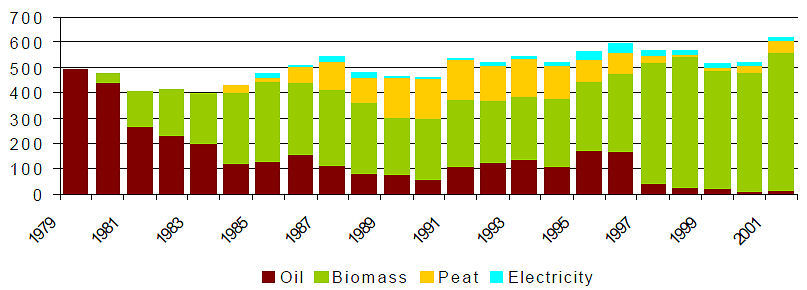
References
10. How can wood be converted to ethanol?
Ethanol is an alcohol, a carbon-based chemical, that can be made from plant materials. Currently, ethanol is produced from corn, bagasse (sugar cane residue), and other starchy materials. The simple sugars from starch are easily processed into ethanol and other products. Producing ethanol from corn, in the USA, has generated a fuel vs. food debate, although the arguments are complex and the food price effects of ethanol production are sometimes exaggerated.
Ethanol can also be produced from cellulosic plant materials. Cellulose is a complex sugar (carbon chain) that provides structure to most plants and is the main component of wood. Cellulose is not so easily converted to simple sugars, and then ethanol. Several pathways are possible and within a few years, the world’s first commercial sized plant may be built. Frontier Renewable Resources has planned a wood-to-ethanol plant near Kinross, in the eastern Upper Peninsula.
Cellulosic ethanol can be produced from thermo-chemical or bio-chemical processes. Bio-chemical processes include fermentation (bugs) and distillation (similar to drinking alcohol). Ethanol can also be manufactured from thermo-chemical gasification, along with biodiesel, waxes, and valuable chemicals. There is a lot of chemistry and engineering involved.
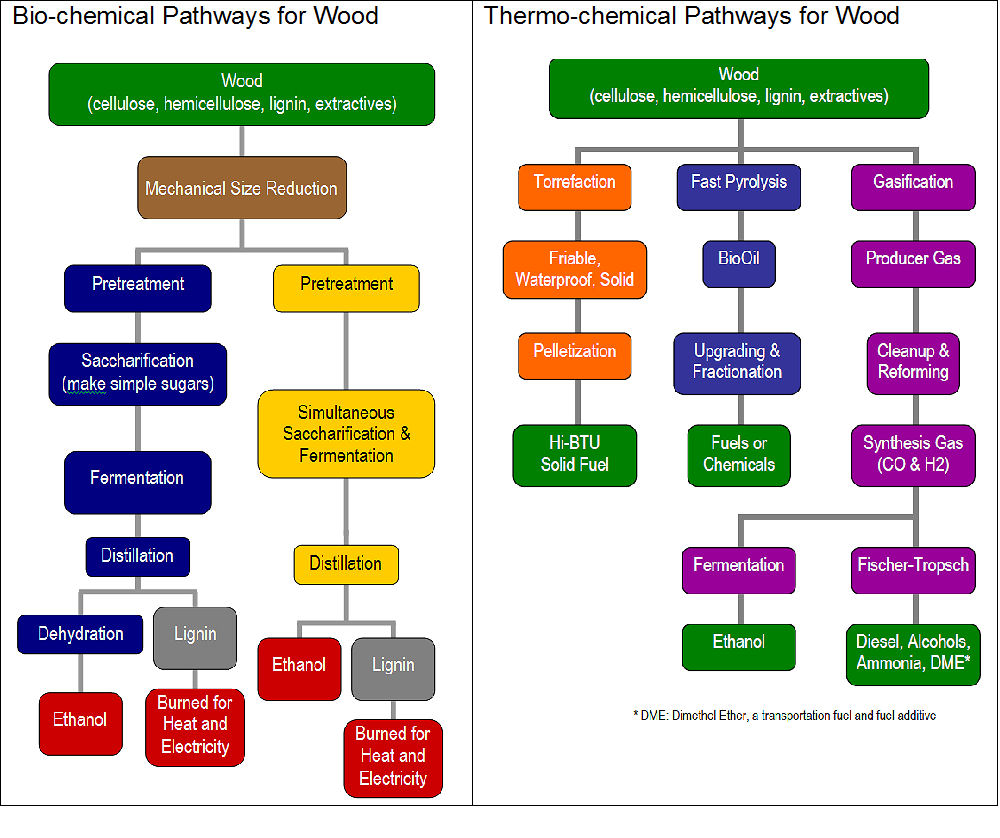
References
Biomass Energy Resource Center
International District Energy Association
Midwest Clean Energy Application Center
Woody Biomass Desk Guide & Toolkit
Williams, Michael. 1989. Americans and Their Forests: A Historical Geography. Cambridge University Press.
 |
This website was developed and created by Michigan State University Extension for the teachers of the State of Michigan. |
Page Name:
2-WoodEnergy.htm